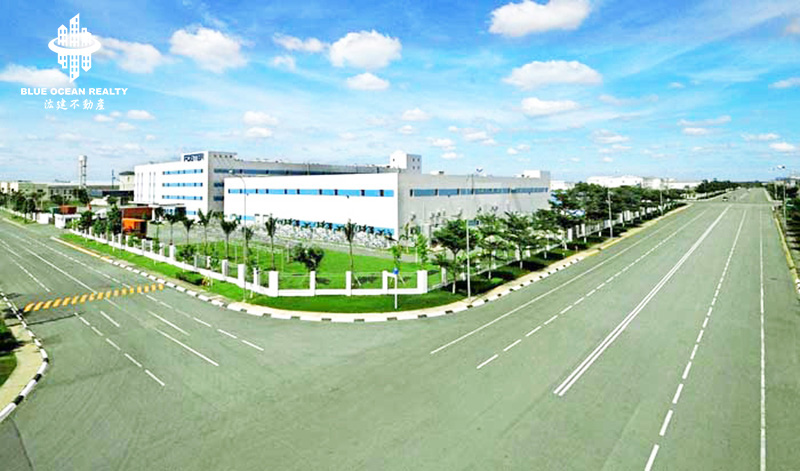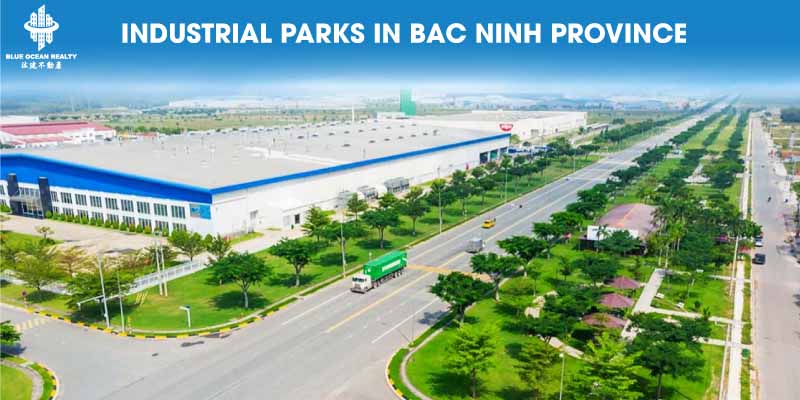Industrial Parks in Bac Ninh Province Attract Investment
Geographical Location
Bac Ninh is the smallest province in Vietnam, covering an area of 822.7 km². The province has a strategic location as the closest satellite city to Hanoi, situated in the economic triangle of Hanoi-Hai Phong-Quang Ninh. Bac Ninh borders:
- North: Bac Giang Province
- West and Southwest: Hanoi
- South: Hung Yen Province
- East: Hai Duong Province
Administrative Units
Bac Ninh consists of 8 administrative units: Bac Ninh city, Tu Son town, and 6 districts (Tien Du, Yen Phong, Thuan Thanh, Que Vo, Gia Binh, Luong Tai). It has 126 local administrative units, including 94 communes, 26 wards, and 6 towns.
Population and Education Level
As of 2020, Bac Ninh’s population ranked 22nd in Vietnam with 1,419,126 people, a population density of 1,725 people per km² (nearly five times the national average). Bac Ninh has a young population, with 64.93% of people in the working age group (15-60 years). As of 2020, the urbanization rate was 38%, with the goal of reaching 70% by 2022.
The province focuses on training and developing its workforce, which is mostly well-educated and skilled. Labor market quality remains a priority, with efforts to connect labor supply and demand and integrate vocational training with job creation.
Education System
Bac Ninh has seen significant development in its industrial parks, attracting a large number of workers from neighboring provinces. This has led to a sharp increase in population and a growing demand for schools, especially in early childhood and primary education.
Currently, Bac Ninh has 501 schools serving 347,784 students. The province maintains a strong position in national education rankings. It also ranks 7th nationally in student achievement based on national talent competitions. By 2025, Bac Ninh aims to improve its educational infrastructure and continue its top-tier status in education development.
Transportation Infrastructure
Bac Ninh boasts a diverse transportation network, including roads, rail, and waterways. Recent investments in roads and infrastructure have enhanced the province’s connectivity, facilitating industrial and economic growth.
- Roads: Bac Ninh has nearly 4,000 km of roads, 100% of which are paved, including four national highways.
- Rail: The Hanoi-Lang Son railway passes through Bac Ninh, with four stations that support both freight and passenger transport.
- Waterways: Bac Ninh has a well-developed water transport system, with three major ports and the ability to handle large vessels up to 3,000 tons.
- Air: Bac Ninh is close to Noi Bai International Airport, providing convenient air transport.

Economic Overview (2020-2021)
Bac Ninh is a key industrial hub in Northern Vietnam, ranking among the top provinces in economic development. In 2020, the industrial production value reached 1.3 trillion VND, and export turnover was 38.9 billion USD. The province’s GRDP per capita reached 6,200 USD, more than double the national average.
Despite challenges from the COVID-19 pandemic, Bac Ninh continued to see economic growth in the first nine months of 2021, with industrial production up 11.74% and export growth at 23.7%. The government’s commitment to economic development and pandemic control helped maintain this positive trend.
Industrial Parks in Bac Ninh Province Attract Investment
Bac Ninh is home to 16 industrial parks, covering 6,500 hectares. These parks have attracted more than 1,600 projects with total investment of 19.8 billion USD. The province continues to attract foreign investors, particularly from Korea, Japan, China, and the EU, with a focus on electronics and high-tech industries.

In 2021, Bac Ninh received government approval for five new industrial parks and two industrial clusters, demonstrating its ongoing commitment to industrial growth. The province’s industrial parks are crucial to its economic strategy, with a focus on high-tech and electronics manufacturing.
Foreign Direct Investment (FDI)
In 2021, Bac Ninh attracted foreign investment from 37 countries, particularly in the electronics sector, which makes up more than 80% of its industrial output. Major investors include Samsung, Foxconn, and Canon, which have created a robust industrial ecosystem in the province.
Industrial Clusters and Small and Medium Enterprises
Bac Ninh has also developed 32 industrial clusters (IC), with 22 currently operational, contributing to local employment and economic growth. The province focuses on creating favorable conditions for both large enterprises and smaller companies.
In conclusion, Bac Ninh has successfully leveraged its strategic location, skilled workforce, and robust infrastructure to attract substantial investment, particularly in electronics and high-tech industries. The province continues to grow as a leading industrial center in Vietnam.

 Learn more about us:
Learn more about us:
—






—



